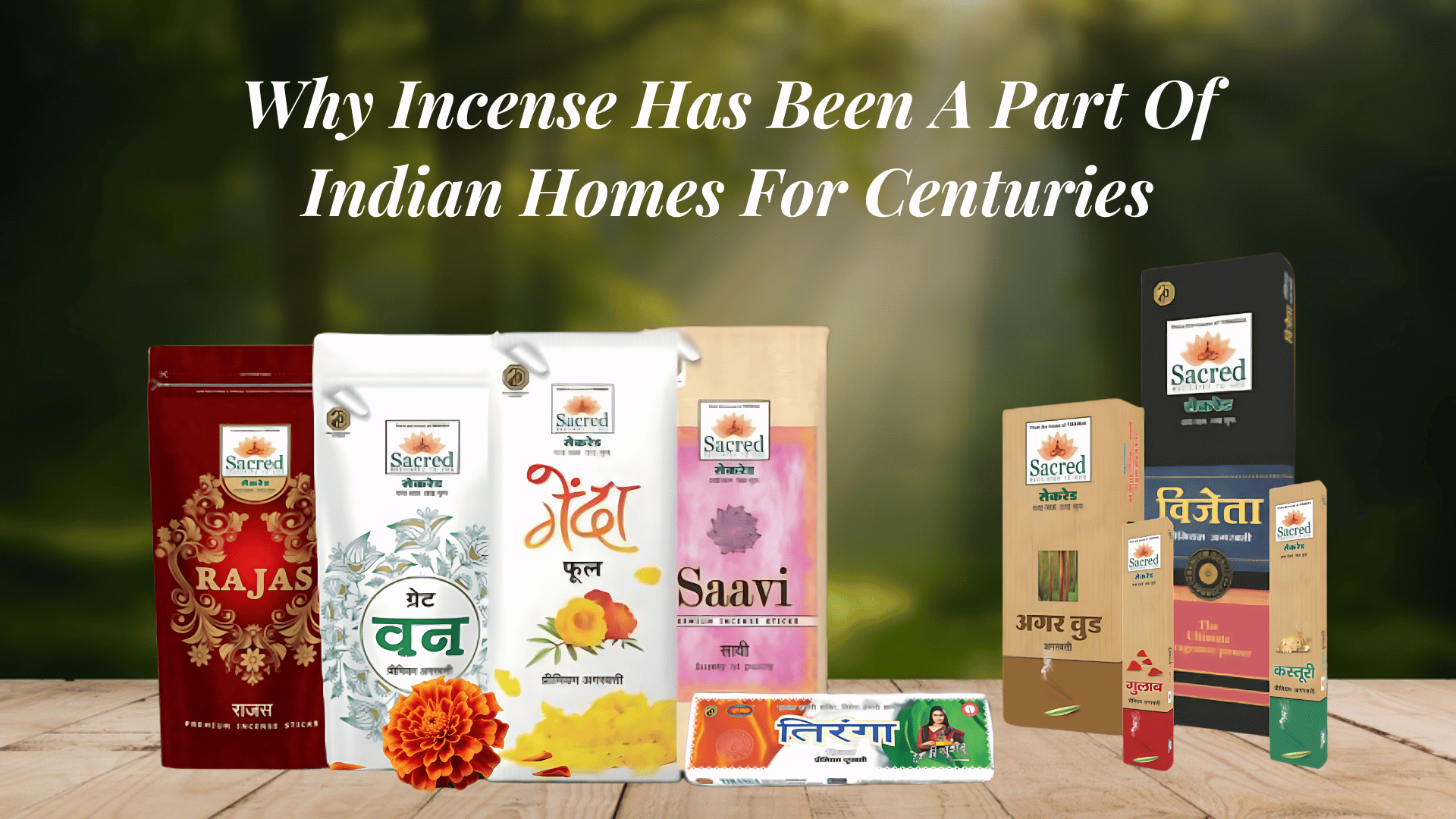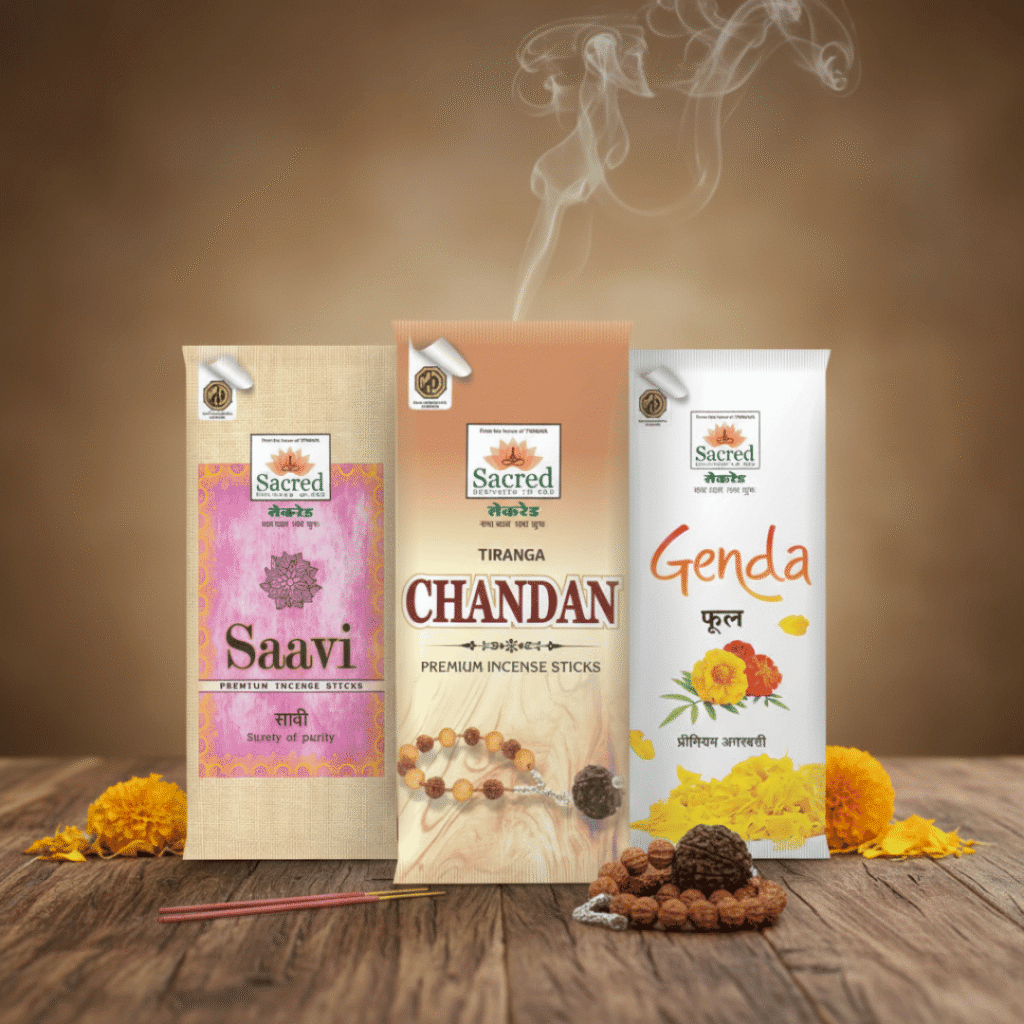Why Incense Has Been a Part of Indian Homes for Centuries

A Fragrant Tradition That Connects the Past, Present & Future
In almost every Indian home, there is a moment each day when the soft curl of fragrant smoke rises into the air. It could be at dawn, during the evening aarti, before a festive celebration, or even quietly at night. This simple act of lighting an agarbatti (incense stick) is more than just spreading fragrance — it’s a gesture of devotion, cultural continuity, and emotional grounding.
For centuries, incense has played an inseparable role in Indian spiritual and cultural life. At Tiranga Agarbatti, we take immense pride in carrying this age-old tradition forward, blending heritage with purity and craftsmanship.

Ancient Roots: Incense in India’s Spiritual DNA
India’s relationship with incense dates back thousands of years. References to the use of fragrant herbs, resins, and woods can be found in Vedic texts. In ancient rituals, sacred fires (yagnas) were accompanied by offerings of aromatic substances like guggul, sandalwood, camphor, and frankincense, believed to purify the environment and elevate spiritual energy.
Temples across India have, for centuries, used incense as part of their daily rituals. The fragrance was considered a symbolic “invitation to the divine”, creating a sanctified atmosphere where prayers could rise along with the smoke. Over time, these temple rituals found their way into households, where lighting incense became part of daily spiritual practice.
“Fragrance is the silent language of devotion.”
At Tiranga Agarbatti, this is not just a belief — it’s the foundation of how we craft every stick. Our range of traditional and premium agarbatti, dhoop sticks, and pooja kits honors these Vedic principles by using pure ingredients and time-tested methods.
Incense in Daily Life: The Scent of Home
Walk into any Indian home during the morning or evening, and chances are you’ll be greeted by a familiar fragrance — Chandan (sandalwood), Mogra, Rose, or Jasmine. These scents aren’t just chosen for their pleasant aroma; each has cultural and emotional significance:
Sandalwood (Chandan) – Cooling, grounding, and associated with spirituality
Jasmine (Mogra) – Sweet and calming; used in temples and festive rituals.
Rose (Gulab) – Symbol of love, devotion, and purity.
Herbal blends – Used to cleanse and energize spaces.
Lighting incense is often the first act of the day — before breakfast, before work, before the world fully wakes up. It creates an ambience of freshness and positivity, setting the tone for the day. In the evening, it brings calmness and closure after a busy day.
This daily rhythm is why incense remains an indispensable part of Indian households, generation after generation.
Incense in Temples & Festivals: A Bridge to the Divine
India is a land of countless temples, rituals, and festivals — each steeped in tradition and fragrance. Incense plays a central role in:
Pujas and Aartis – Incense sticks are waved before deities as an act of reverence.
Temple corridors – Filled with the mingling scents of dhoop, camphor, and flowers.
Festivals like Diwali, Navratri & Raksha Bandhan – Homes are decorated, lamps lit, and incense burned to invoke blessings and purify spaces.
Havans and Yagnas – Herbs and wood powders are burned in sacred fire, releasing aromatic smoke meant to cleanse energies.
At Tiranga Agarbatti, we celebrate this living heritage. Our Devalaya Series, for example, is inspired by famous Indian temples like Rawali Mahadev (Agra) and Kashi Vishalakshi Mandir (Varanasi). We see incense not as a product — but as a cultural bridge connecting homes to sacred spaces.
Beyond Rituals: Incense for Wellness & Mindfulness
While incense is deeply connected to spirituality, modern India is rediscovering its role in wellness and emotional balance. Science today validates what our ancestors knew intuitively:
● Certain fragrances like sandalwood have calming properties that reduce anxiety.
● Herbal blends purify the air and create a sense of serenity.
● Incense during meditation helps in deepening focus and mindfulness.
Whether it’s lighting dhoop sticks before yoga, burning a mild agarbatti while reading, or simply enjoying a cup of tea in a fragrant corner — incense offers a simple, natural way to enhance mood and mental well-being.
At Tiranga Agarbatti, we carefully craft our blends to ensure they’re gentle on the senses yet long-lasting, using high-quality raw materials and traditional techniques.
The Art of Making Incense: A Tradition Preserved
The journey of a single agarbatti stick is fascinating:
Raw Material Selection
High-quality bamboo sticks, natural wood powders, and aromatic resins are sourced.
Fragrance Blending
Expert perfumers create blends using essential oils, flowers, herbs, and resins.
Hand Rolling or Machine Crafting
Depending on the type, agarbatti are either hand-rolled (traditional) or made using modern precision tools.
Drying & Curing
Sticks are dried carefully to preserve the fragrance profile.
Packaging
Tiranga Agarbatti uses resealable zipper packs, eco-packs, and family packs to keep the aroma locked in.
What sets us apart is the balance between authentic tradition and modern quality standards. We avoid cheap synthetic fillers and prioritize natural ingredients for a pure, devotional experience.
Tiranga Agarbatti: Rooted in Indian Values
The name “Tiranga” is a tribute to the Indian tricolour — symbolizing unity in diversity, cultural pride, and purity. Under the leadership of Mr. Narendra Sharma (MD & CEO) and Mr. Siddhartha Sharma (Director), Tiranga Agarbatti brings together 30+ years of industry experience with modern marketing insight.
Our vision is simple yet profound:
“To make every Indian home smell like devotion — pure, uplifting, and connected to tradition.”
We cater to homes, temples, businesses, and communities across India, offering a diverse range of fragrances and formats — from everyday agarbatti to temple-grade dhoop and pooja kits.


Why Incense Will Always Belong in Indian Homes
Despite modern gadgets, air fresheners, and lifestyle changes, incense retains a unique place because:
● It connects generations — grandparents to grandchildren, traditions to trends.
● It’s deeply emotional — evoking memories, prayers, and festive moments.
● It transcends religion — used by Hindus, Buddhists, Jains, Sikhs, and others.
● It’s affordable yet meaningful — a simple act with powerful cultural impact.
Every time you light a Tiranga Agarbatti, you are continuing a centuries-old story — a fragrant thread woven through India’s cultural fabric.
Conclusion: A Fragrance That Lives Forever
The story of incense in India is not just about smoke and scent — it’s about identity, devotion, and continuity. It’s a tradition that has survived empires, evolved with time, and still greets usevery morning and evening in homes across the nation.
At Tiranga Agarbatti, we are honoured to be custodians of this heritage, offering products that stay true to their spiritual roots while meeting modern standards of quality and purity.
So the next time you light an incense stick, pause for a second. Watch the smoke spiral upward. Smell the fragrance. Feel the quiet connection with generations before you.
That is the timeless magic of incense — and the soul of Tiranga Agarbatti.

